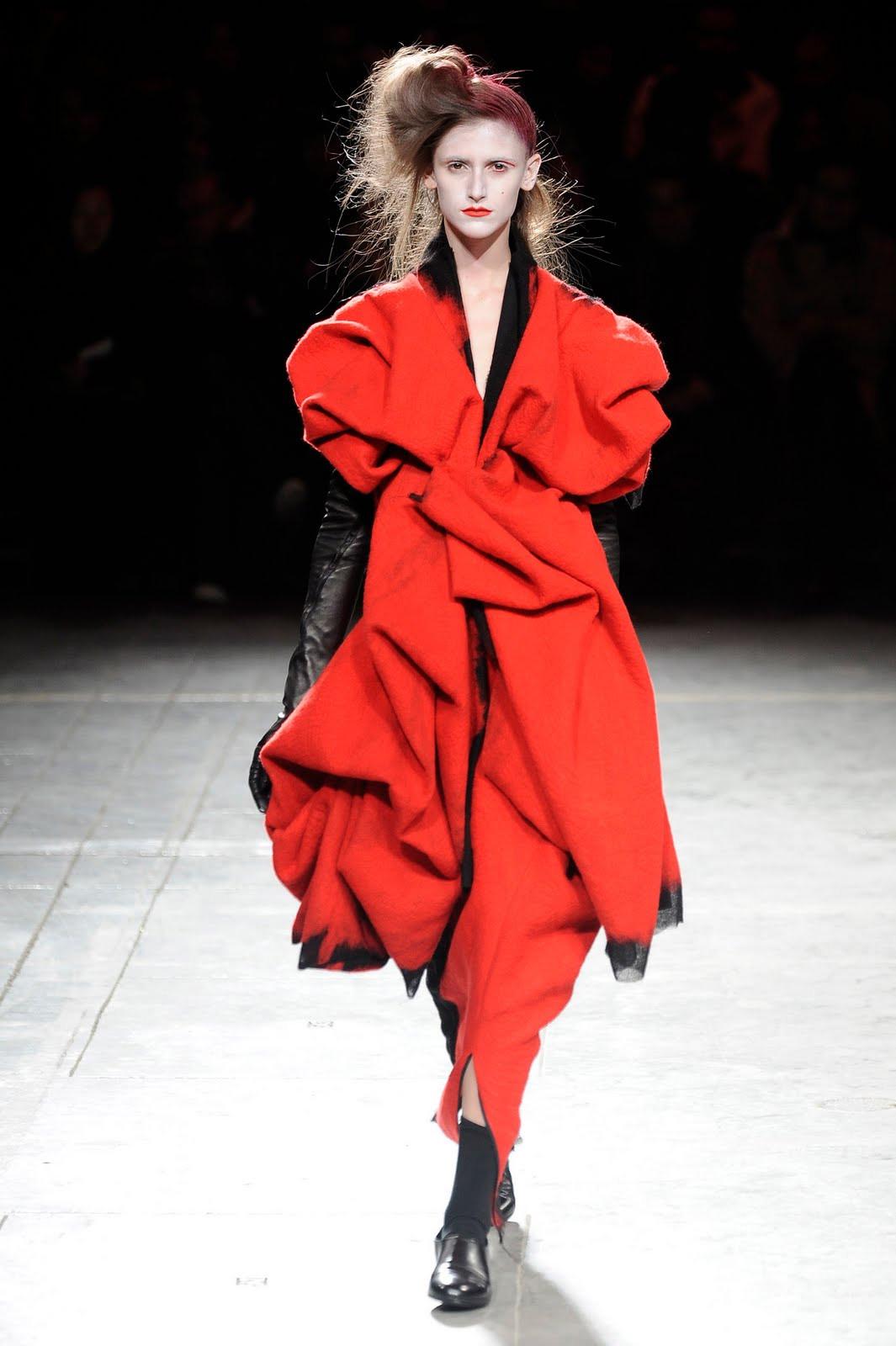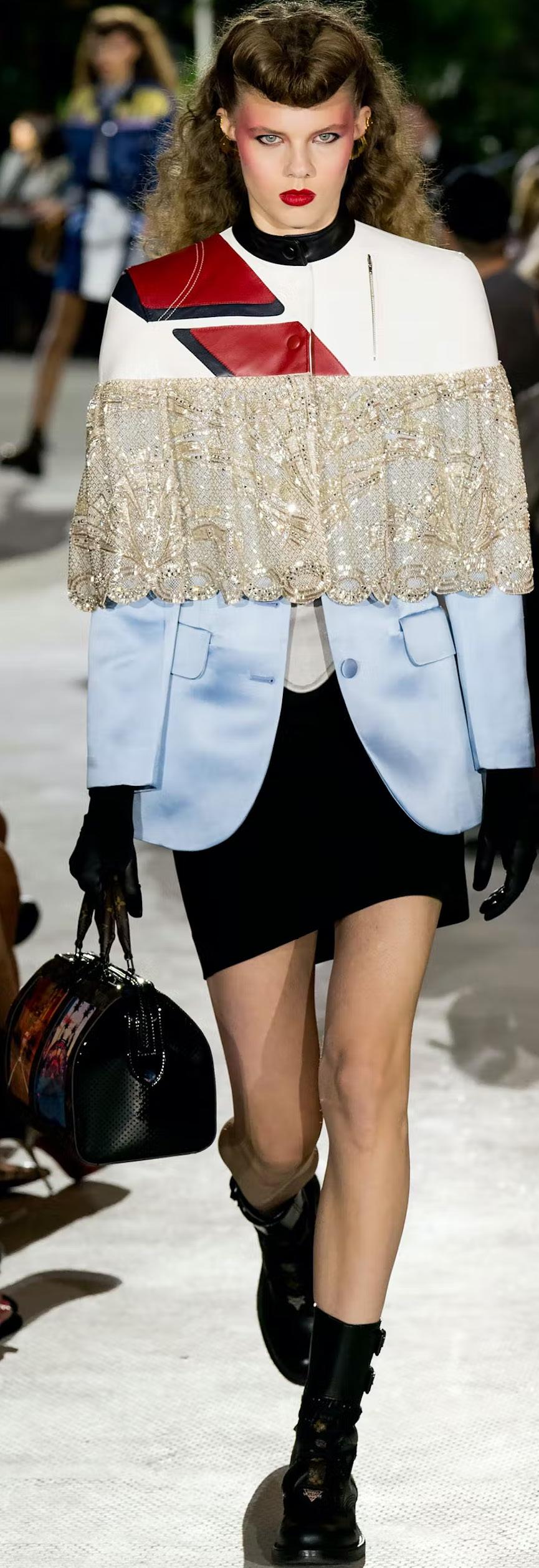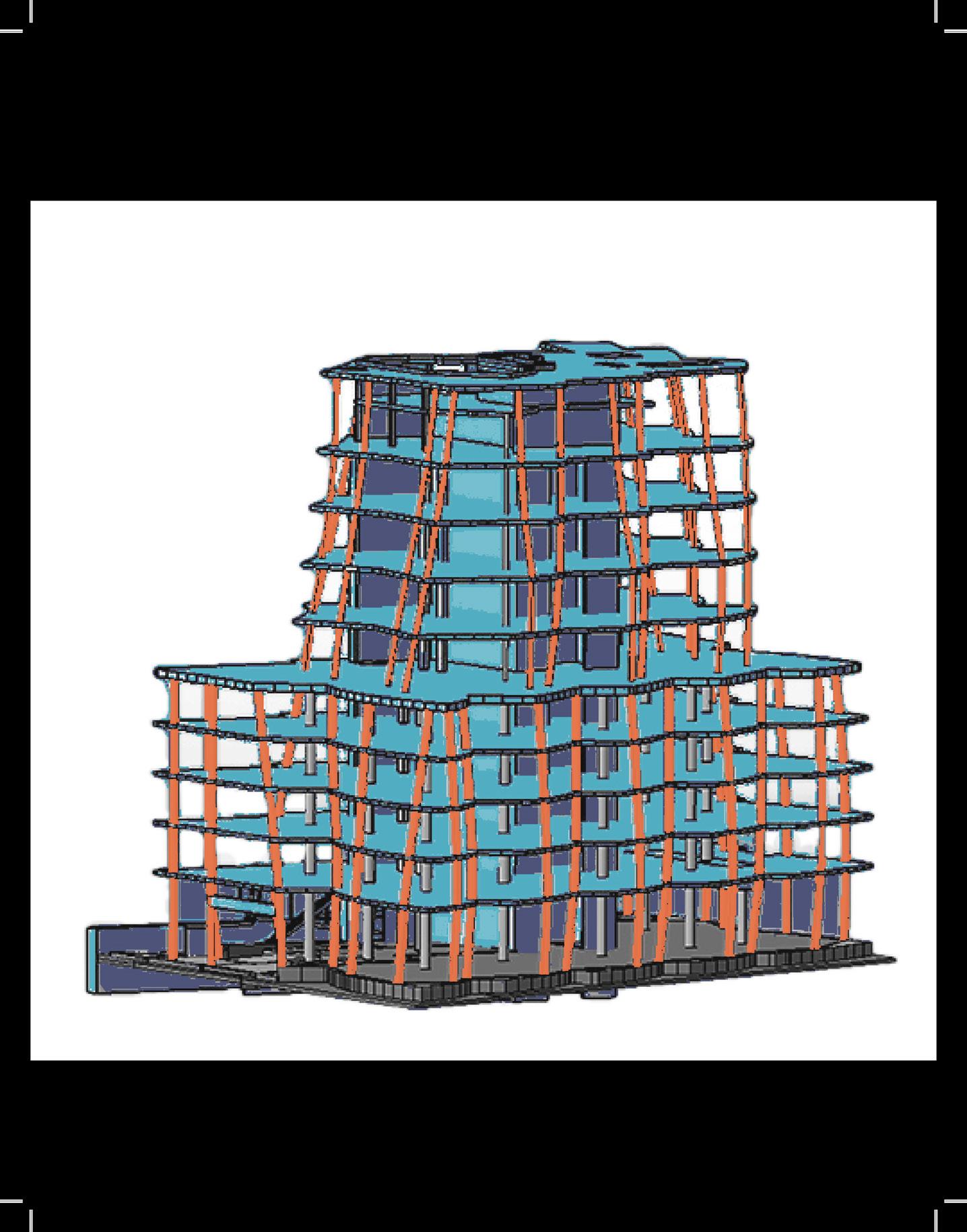EXECUTIVE SUMMARY
Deconstructivism is a paradigm shift in the modernist architecture movement. Architects and designers deconstructed forms that broke away from symmetrical, clean forms. The deconstruction of the form allows designers to push the boundaries of form to create something extraordinary.

It emphasizes the characteristics of the form, bringing character and revival to the cities they embody. It is considered a visual expression that unleashes infinite possibilities.
Diverge Magazine believes deconstructivism allows us to challenge ourselves and the possibilities of form in architecture.
A sketch by Zaha Hadid that led to the design of the Contemporary Arts Center in Cincinnati. ContemporaryArtsCenter.org
50 51
Image Sources
AOE. designboom, kat barandy I. (2020, May 19). With ‘one Sino Park’, AOE architects brings back cavernous and fragmented deconstructivism. designboom. Retrieved April 16, 2023, from https://www.designboom.com/architecture/onesino-park-aoe-architects-deconstructivism-chongqing-china-05-19-2020/
Buisson, B. (2021, June 2). Photo by Baptiste Buisson on unsplash. Beautiful Free Images & Pictures. Retrieved April 16, 2023, from https://unsplash.com/photos/ OlcSJM4Jz3M
Prospect Magazine - Britain’s Leading Monthly Current Affairs Magazine. Prospect Magazine - Britain’s leading monthly current affairs magazine. (n.d.). Retrieved April 16, 2023, from https://www.prospectmagazine.co.uk/
Tzenkova, A. (2020, May 26). Nicholas Chistiakov Exploring deconstructivism. TRENDLAND. Retrieved April 16, 2023, from https://trendland.com/nicholaschistiakov-exploring-deconstructivism/
Aleksandar. (2019, October 3). Urassaya Sperbund at Louis Vuitton fashion show in Paris 10/01/2019. HawtCelebs URASSAYA SPERBUND at Louis Vuitton Fashion Show in Paris 10012019 Comments. Retrieved April 16, 2023, from https:// www.hawtcelebs.com/urassaya-sperbund-at-louis-vuitton-fashion-show-inparis-10-01-2019/
Build on body. YURI AHN. (2017, August 9). Retrieved April 16, 2023, from https:// yuriahn.net/portfolio/deconstruction-in-structure/
At Comme des Garçons Spring 2020, royalty comes undone. (n.d.). Retrieved April 17, 2023, from https://fashionista.com/2019/09/comme-des-garcons-spring-2020review
Yohji Yamamoto. FARFETCH. (n.d.). Retrieved April 16, 2023, from https://www. farfetch.com/shopping/women/yohji-yamamoto/items.aspx
TREND HUNTER Inc. (2015, January 14). Deconstructed denim runways. TrendHunter.com. Retrieved April 16, 2023, from https://www.trendhunter.com/ trends/xander-zhou-menswear
Menkes, S. (2009, October 4). When creativity goes beyond content. The New York Times. Retrieved April 16, 2023, from https://www.nytimes.com/2009/10/05/ fashion/05iht-rcreative.html
Deconstructivism architecture. Coroflot. (n.d.). Retrieved April 16, 2023, from https://www.coroflot.com/michaelacapkova/deconstructivism-architecture
Deconstruction fashion ~ anti-fashion. makingtheunfinished. (2012, May 28). Retrieved April 16, 2023, from https://makingtheunfinished.wordpress. com/2012/05/28/deconstruction-fashion-anti-fashion-5-2/
TREND HUNTER Inc. (2015, May 16). 20 deconstructed denim fashions. TrendHunter.com. Retrieved April 16, 2023, from https://www.trendhunter.com/ slideshow/deconstructed-denim
Pacificnorthern. (2017, October 12). Pacific Northern, Inc.. Tumblr. Retrieved April 16, 2023, from https://pacificnorthern.tumblr.com/post/166331318057/customfixture-designed-by-vincenzo-de-cotiis
Hannes Grebin, Cozy Chair, DE, 2018. Todd Merrill Studio. (2020, October 5). Retrieved April 16, 2023, from https://toddmerrillstudio.com/shop/studio/seatingstudio/chairs-studio/hannes-grebin-cozy-chair-de-2018/
TREND HUNTER Inc. (2014, September 15). Geometric dual-purpose furnishings. TrendHunter.com. Retrieved April 16, 2023, from https://www.trendhunter.com/ trends/angled-coffee-table
Wiggle. biagettidesignclub. (n.d.). Retrieved April 16, 2023, from https:// biagettidesignclub.com/en/products/wiggle
Mässvägen, A. (2015, February 6). Too Much Too Much: Young Polish designers in Stockholm. Culture.PL. Retrieved April 16, 2023, from, https://culture.pl/pl/ wydarzenie/too-much-too-much-mlodzi-polscy-projektanci-w-sztokholmie
Oft interiors. (n.d.). Retrieved April 17, 2023, from https://www.oftinteriors.com/ works/288
Contemporary Arts Center. Home. (n.d.). Retrieved April 18, 2023, from https:// www.contemporaryartscenter.org/
McCready, L. (2011, September 23). Form in motion: Architect Zaha Hadid on her exhibit at the Philadelphia Museum of Art. Vogue. Retrieved April 16, 2023, from https://www.vogue.com/article/form-in-motion-architect-zaha-hadid-on-herexhibit-at-the-philadelphia-museum-of-art
Marani, M. (2020, August 14). Morphosis founder Thom Mayne on the future of facades. The Architect's Newspaper. Retrieved April 16, 2023, from https://www. archpaper.com/2018/10/thom-mayne-morphosis-facades/
Anandita. (2022, December 19). 20 famous architects who transformed Architecture (2022). Online Professional Courses for Designers, Architects & Engineers. Retrieved April 16, 2023, from https://www.oneistox.com/blog/famousarchitects
Rose Etherington |30 August 2012 21 comments. (2022, April 5). Wolf D. Prix Slates venice architecture biennale. Dezeen. Retrieved April 16, 2023, from https:// www.dezeen.com/2012/08/30/venice-architecture-biennale-is-exhausting-bleakand-boring-says-wolf-d-prix/
Guardian News and Media. (2020, November 27). An event, perhaps by Peter Salmon Review – a timely biography of Jacques Derrida. The Guardian. Retrieved April 16, 2023, from https://www.theguardian.com/books/2020/nov/27/an-eventperhaps-by-peter-salmon-review-a-timely-biography-of-jacques-derrida
Admin, S. (2013, April 25). Bernard Tschumi. Architype. Retrieved April 16, 2023, from https://architypereview.com/bernard-tschumi/
NYU Local. (2016, November 16). Peter Eisenman speaks on deconstruction and architecture at the Deutsches Haus. Medium. Retrieved April 16, 2023, from https://nyulocal.com/peter-eisenman-speaks-on-deconstruction-and-architectureat-the-deutsches-haus-264a557fdbdb
Bessing, J. (2022, February 7). Mark Wigley. 032c. Retrieved April 16, 2023, from https://032c.com/magazine/mark-wigley
10 lessons to learn from Rem Koolhaas. Arch2O.com. (2022, October 22). Retrieved April 16, 2023, from https://www.arch2o.com/10-lessons-to-learn-fromrem-koolhaas/
Miller, P. (2016, November 17). IAC Building - New York. Flickr. Retrieved April 16, 2023, from https://www.flickr.com/photos/64210496@N02/31050286725
Gehry F. (2009). The IAC Building, Print. ARTSPACE. Retrieved April 16, 2023, from https://www.artspace.com/frank_gehry/the-iac-building
Gehry, F. (2007), IAC 2, Print. Artsy. Retrieved April 16, 2023, from https://www. artsy.net/artwork/frank-gehry-iac-2-2
Gehry's Westside Ride. Brian Ades Legacies of L.A. (2021, September 24). Retrieved April 16, 2023, from https://legaciesofla.com/gehrys-westside-ride/
Person. (2006, January 11). The Wall Street Journal. Retrieved April 17, 2023, from https://www.wsj.com/articles/SB113694812744043435
Mathiesson, B. (2011, January). Models for IAC Building, Vitra Design Museum. D-Talks. Retrieved April 16, 2023, from http://www.d-talks.com/wp-content/ uploads/2011/01/Models_for_IAC_Building_New_York_Photographer-BettinaMatthiessen-%C2%A9-Vitra-Design-Museum-150x150.jpg
IAC Headquarters. DeSimone. Retrieved April 16, 2023, from https://www.desimone.com/projects/project/iac-headquarters/
Yanlev. (2021, November 2). Businesspeople. Adobe Stock. Retrieved April 16, 2023, from https://stock.adobe.com/images/ businesspeople/91984505?as_campaign=TinEye&as_content=tineye_ match&clickref=1101lwI6LeWV&mv=affiliate&mv2=pz&as_camptype=domain&as_ channel=affiliate&as_source=partnerize&as_campaign=tineye
IAC Building. General Glass International. Retrieved April 16, 2023, from https:// www.generalglass.com/projects/iac-building/
Rose, B. (2007, March 31). New York/IAC Building. Journal. Retrieved April 16, 2023, from https://www.brianrose.com/journal/archive/2007_03_01_archive.html
IAC Building, interiors by studios architecture. Architizer. (2016, March 18). Retrieved April 16, 2023, from https://architizer.com/projects/iac-buildinginteriors/
Vimeo film festival - kathyhorohoe. (n.d.). Retrieved April 16, 2023, from https:// cargocollective.com/kathyhorohoe/Vimeo-Film-Festival
References
Britannica, T. Editors of Encyclopaedia (2023, February 24). Frank Gehry. Encyclopedia Britannica. https://www.britannica.com/biography/Frank-Gehry
Britannica, T. Editors of Encyclopaedia (2023, January 19). deconstruction. Encyclopedia Britannica. https://www.britannica.com/topic/deconstruction
Chicchi, R., & Boothby, T. E. (2008). IAC/InterActiveCorp Headquarters New York, NY . Retrieved April 17, 2023, from https://www.engr.psu.edu/ae/thesis/ portfolios/2009/rac281/tech1-pdf.pdf
Chistiakov, N. (2023). Art of Nicholaas Chiao. Contemporary Art & Nicholaas Chiao - Multidisciplinary Artist in Bensonhurst, Brooklyn, New York, USA. Retrieved April 10, 2023, from https://nicholaaschiao.com/index.html
Deconstructivism - deconstructive architecture style characteristic. Kadva Corp. (2018, July 16). Retrieved April 10, 2023, from https://www.kadvacorp.com/ design/deconstructive-architecture-style/
Gaultier, J. P. (2021, July 13). Deconstruction in Fashion. FIDM Museum. Retrieved April 10, 2023, from https://fidmmuseum.org/2010/02/ deconstruction-in-fashion.html#:~:text=These%20days%2C%20it%27s%20 fairly%20common,style%20is%20usually%20called%20deconstructionism
Giusti, M. (2021, October 15). Vincenzo de Cotiis: ‘There’s Hidden Painting in Everything do’. Financial Times. Retrieved April 10, 2023, from https://www. ft.com/content/0172e50a-9f82-4f37-a5ab-bc580a8449d4
Hogg, S. (2020, July 13). Frank Gehry Bench to be Unveiled in Milan. The Architects’ Journal. Retrieved April 10, 2023, from https://www. architectsjournal.co.uk/archive/frank-gehry-bench-to-be-unveiled-in-milan
Jacques Derrida, John D. Caputo (1997). “Deconstruction in a Nutshell: A Conversation with Jacques Derrida”, p.6, Fordham Univ Press JBDAdmin. (2022, October 27). Deconstructivism (1970s-present). iDesignWiki. Retrieved April 10, 2023, from https://www.idesign.wiki/en/deconstructivism1970s-today/
Juliao, D. (2023). Take online courses. earn college credit. Research Schools, Degrees & Careers. Deconstructivism in Art: Theory & Characteristics Retrieved April 16, 2023, from https://study.com/academy/lesson/deconstructivismin-art-theory-characteristics.html#:~:text=Deconstructivism%20is%20an%20 artistic%20movement,considered%20a%20current%20of%20postmodernism
Making the Unfinished. (2012, May 28). Deconstruction Fashion ~AntiFashion. makingtheunfinished. Retrieved April 10, 2023, from https:// makingtheunfinished.wordpress.com/2012/05/28/deconstruction-fashion-antifashion-5-2/
Myers, L. (2019, January 25). Oft Interiors’ UA Cinemas Design Celebrates Deconstructivism in Shanghai. DesignBoom. Retrieved April 10, 2023, from https://www.designboom.com/architecture/oft-interiors-ua-cinemashanghai-01-24-2019/
Renault, M. (2020). Fashion deconstruction. Exhibition Magazine. Retrieved April 16, 2023, from https://exhibition-magazine.com/articles/fashion-
52 53
1 2 3 4 5 6 7 8 9 10 11 12 13 14 15 16 17 18 19 20
21 22 23 24 25 26 27 28 29 30 31 32 33 34 35 36 37 38 39 40 41




 Haley Giroux | publication design
©Diverge
Haley Giroux | publication design
©Diverge






























 -
-


































 Rem Koolhaas - Vogue Magazine, Russia
Rem Koolhaas - Vogue Magazine, Russia




























































